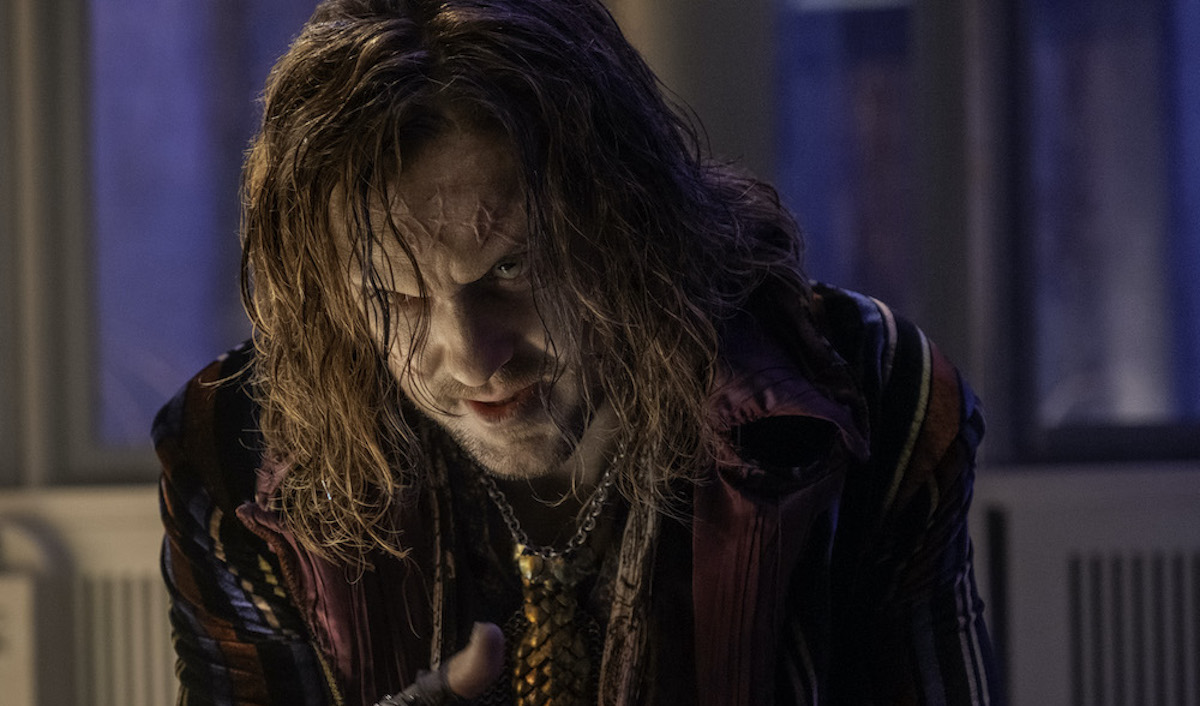It’s Halloween night, and the thing that most terrifies teenage misfit Kelly Ferguson (Tamara Smart) is making it through the popular kids’ party without being called “Monster Girl.” After the ill-advised choice to tell her peers about a traumatic incident of almost getting snatched by a monster as a child, the unfortunate nickname has stuck and tanked all hope of ever joining the in-crowd. It’s useful, then, that her mother (Crystal Balint) promised Kelly’s babysitting services to her ice queen boss Ms. Zellman (Tamsen McDonough) and her problem child Jacob (Ian Ho). But when that adorable child gets snatched by the same otherworldly creature that once haunted Kelly, the hapless caretaker is thrown into a secret underworld and gets her first lesson in A Babysitter’s Guide to Monster Hunting.
Netflix’s kids’ movie is a clear attempt to kick-start a franchise. Based on the book trilogy by Joe Ballarani, which blends the hijinks of Adventures in Babysitting with the thrills of Are You Afraid of the Dark?, the inaugural installment also feels like it pays equal homage to Labyrinth and Hocus Pocus. Unfortunately when left to its own merits, the movie doesn’t rise to the level of any of these classics.
It shows promise in depicting a world where babysitters’ responsibilities extend beyond enforcing bedtime. For here it also means ensuring that boogeymen like the Grand Guignol (Tom Felton) don’t conjure creatures out of children’s nightmares to wreak havoc on the waking world. Yet for a Halloween movie, A Babysitter’s Guide doesn’t take enough advantage of the holiday’s invitation for mischief and mayhem, let alone costumes and alter egos. Shadow monsters aside, this could have taken place any old night.
In adapting his own books (the first of which was published in 2017), Ballarini wisely revisits the diversity of the main cast. Originally a white girl, Kelly is now Black (allowing Smart to utilize her skills much better than last year’s Are You Afraid of the Dark? reboot did). In fact, the order of babysitters reflects a wide range of backgrounds and mostly skews female. One can’t help but wonder if that is a nod to horror’s tendency to dismiss or outright ignore the fears and warnings of girls and women. This is a kids’ level of scary movie, but the order of the babysitters deals in the same thematic issues of not being believed—here in regards to a monster under the bed.
Among the grizzled adolescent veterans of the babysitter/monster wars is Liz LeRue (Oona Laurence), a post-apocalyptic-looking warrior with a baby strapped to her back, and a chip on her shoulder in the form of her missing brother. Liz and Kelly’s interactions are paint-by-numbers “old pro teaches newbie the ropes,” and it lacks any surprise.
But the most curious bit of casting involves Harry Potter alum Felton as the Grand Guignol. Lurking in closets and crooning ominous lullabies, he briefly conjures Labyrinth’s Jareth the Goblin King, who has a penchant for kidnapping. Yet Felton simultaneously lacks David Bowie’s strangely pristine magnetism. By contrast, the Grand Guignol is wreathed in so much dirt and makeup that it’s difficult to recognize the actor underneath. So it’s not as if Felton is doing it for a recognizable career shift, like Henry Melling’s recent villainous turn in Netflix’s The Old Guard, nor is it a scene-stealing oddball performance on par with Daniel Radcliffe’s post-Potter roles. He’s just… there.
The sets (both the babysitters’ HQ and the Grand Guignol’s lair) resemble old-school Nickelodeon game shows, tending toward loudly cartoonish instead of subtly scary. This has the effect of making every scene that takes place in them, from the movie’s riff on a James Bond gizmo tutorial with Q (here, a teddy bear smoke grenade) to the nightmarish final showdown, have the feel of a racing-clock obstacle course. You half expect Olmec from Legends of the Hidden Temple to speak up, or for someone to get slimed at a crucial moment.
So it’s too bad that the special effects lean more toward CGI than practical; the Grand Guignol’s cadre of “toadies” (toad-like cronies), for example, would have been far more effective as puppets, instead just mere digital distractions. However, one of the movie’s best motifs is Kelly’s A Beautiful Mind-esque cognitive problem-solving. Whether it’s a geometry problem or mentally riffling through the pages of the babysitters’ grimoire, she pulls out diagrams and drawings with an almost superhuman speed, culminating in some quick thinking and mythical moves. Rather than feeling like a random everygirl who stumbled into this world, Kelly is clearly finding her place, and bringing something new to the order.
There’s a huge divide between learning about the order’s existence and actually being invited to join the ranks. The former is as straightforward as losing one’s charge—which, as we’ve learned from babysitter stories, happens more often than you’d think—but the latter is a much more exacting trial. Each of these teenage monster hunters bears a battle scar from their own childhood run-ins with a night terror; their survival, they believe, compels them to save little kids from the same traumatic memories.
Yet the greatest trauma, as Kelly and her peers know, is of not being taken seriously when you discover these lurking dangers—and then being ostracized for that cursed knowledge, until finding the people who will finally believe you. The babysitters’ calling is a coming-of-age story which proves that, even though parents think any teenager can do the job, few can do the job right.
A Babysitter’s Guide to Monster Hunting is now available on Netflix.
